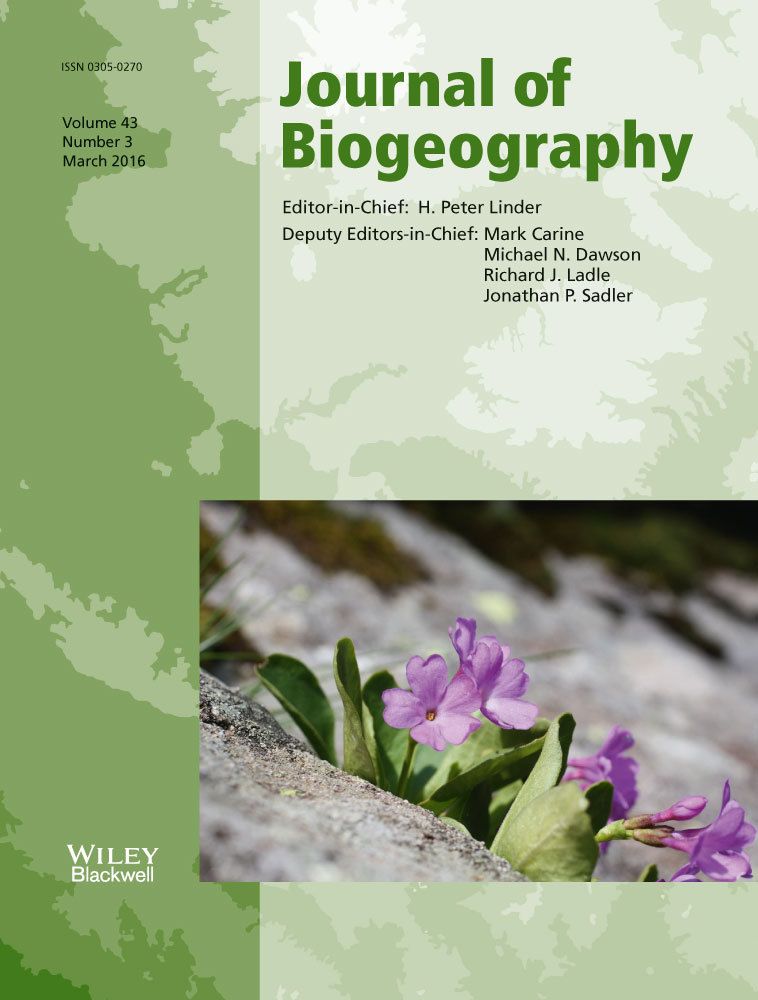Genetic structure along the strandline: Unravelling invasion history in a one-dimensional system
Abstract
Aim
To unravel the genetic processes involved in a case of invasion by one species, the self-incompatible Cakile maritima Scop. (Brassicaceae) in Australia, as it has replaced a related prior invader, Cakile edentula (Bigelow) Hook.
Location
Southern and eastern coastlines of Australia.
Methods
Genetic diversity within and between populations was characterized at a continental scale using microsatellite (SSR) markers to examine nuclear diversity and cleaved amplified polymorphic sequence (CAPS) markers to examine chloroplasts. DNA was sourced from 24 populations of C. maritima along its putative invasion trajectory and, for comparison, from four populations of C. edentula that are currently being invaded by C. maritima. Analysis of Molecular Variance and a Bayesian assignment method were used to explore the data.
Results
No evidence was found for progressive loss of diversity in C. maritima in the putative direction of range expansion. Western and south-eastern populations of C. maritima have almost certainly resulted from independent introductions, although there is evidence of very limited gene flow from west to east. There was considerably greater, spatially structured variation in the south-east, suggesting multiple introductions of C. maritima to that region. We found evidence of hybridization and introgression from C. edentula into C. maritima, both in the two regions where they are currently sympatric and elsewhere.
Main conclusions
The invasion history of a species spreading in a largely one-dimensional habitat can still be highly complex and difficult to interpret. Regional patterns of variation in C. maritima indicate several introductions from different parts of the native range, limited gene flow from the first introduction eastwards and genetic drift within Western Australia. There has also been bi-directional gene flow between this species and C. edentula. The significance of the introgression from C. edentula into C. maritima with respect to natural selection, however, remains to be determined.




